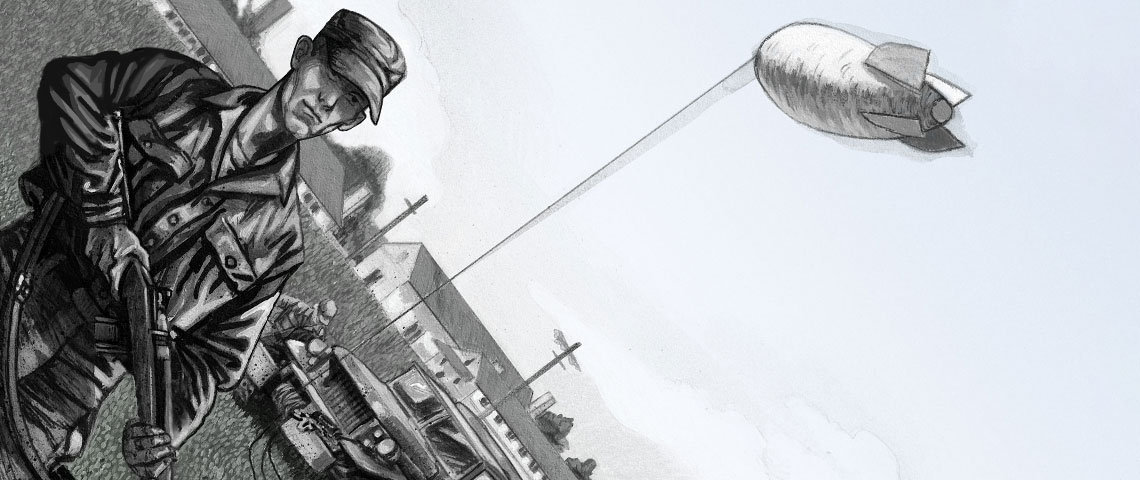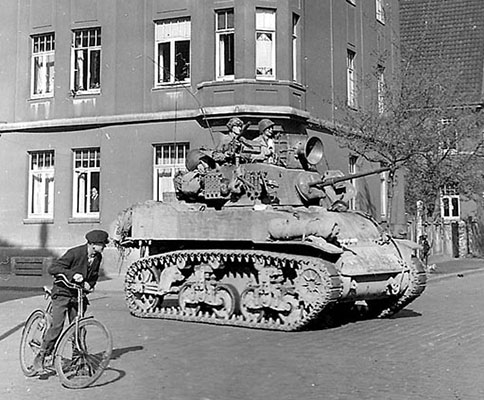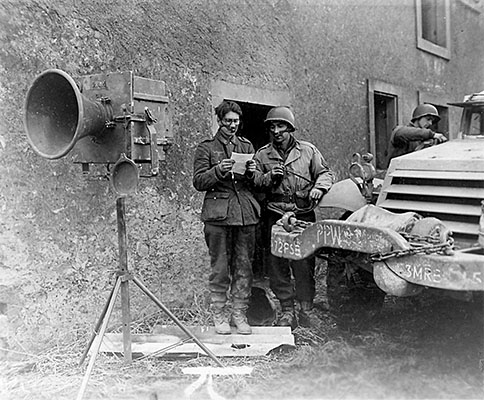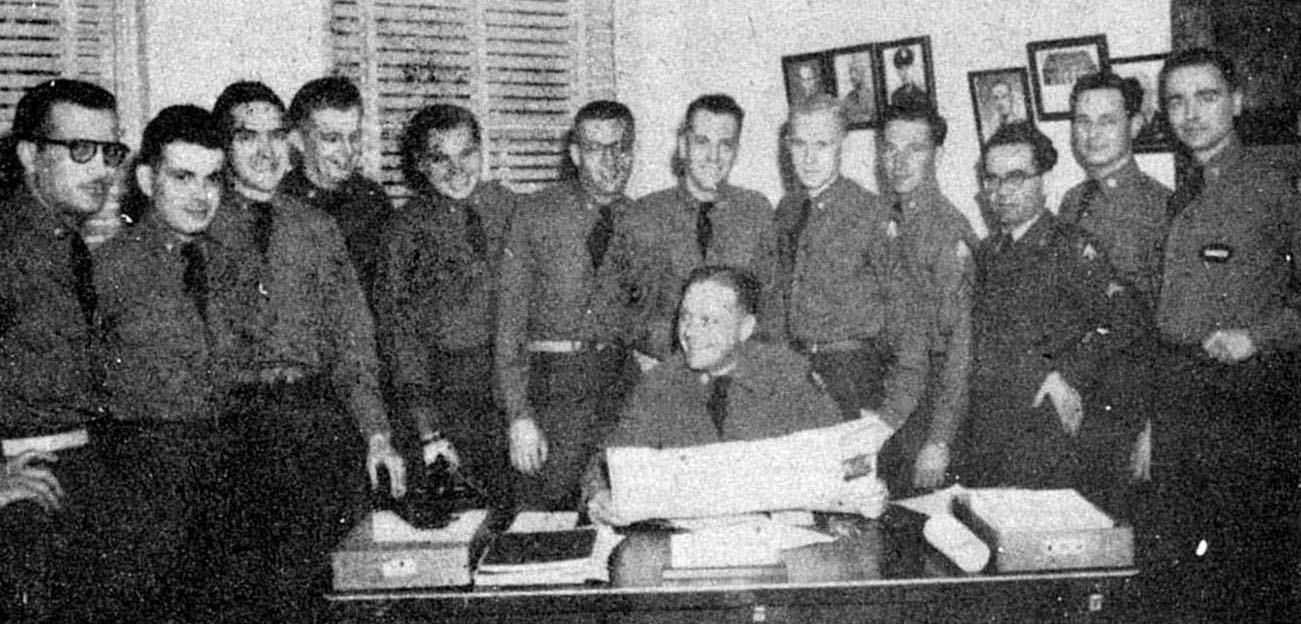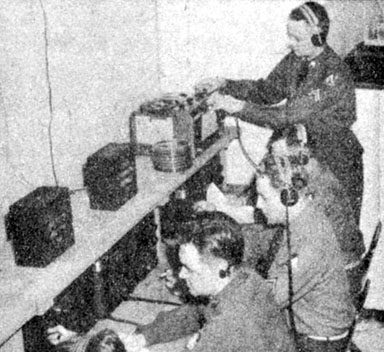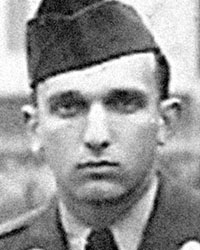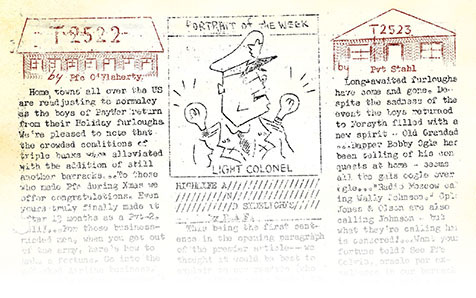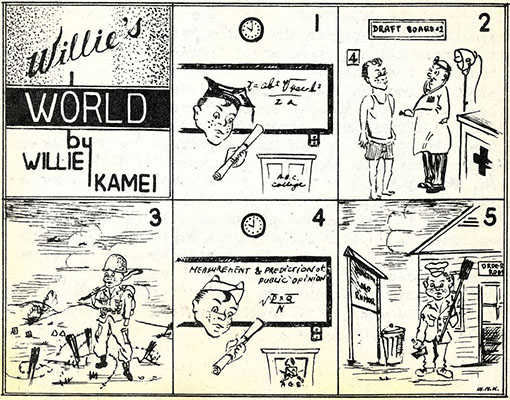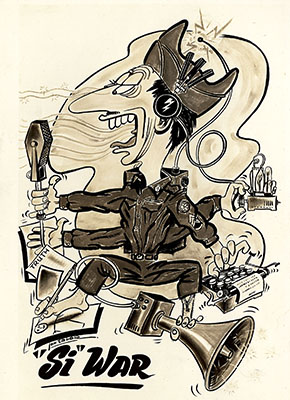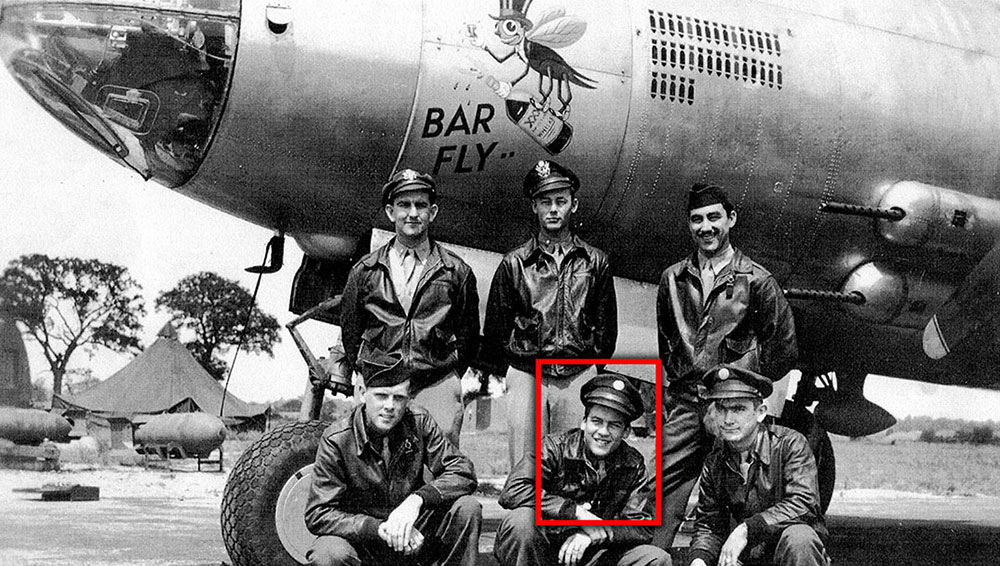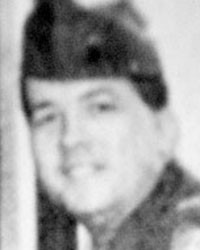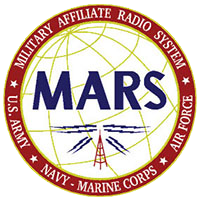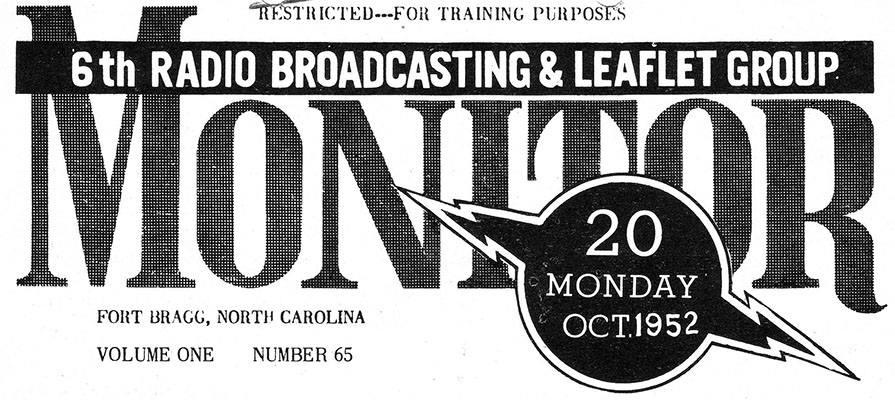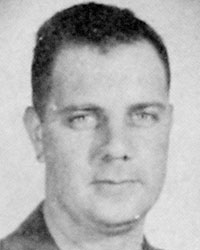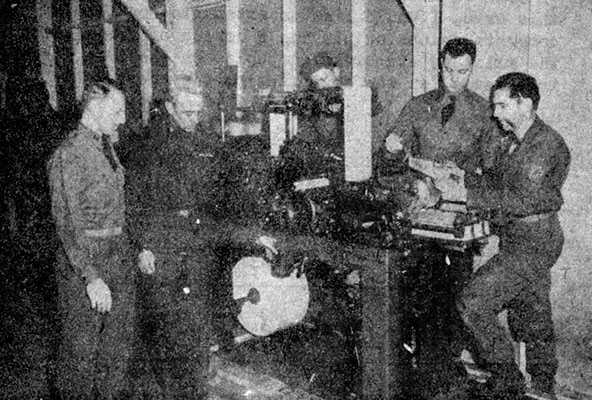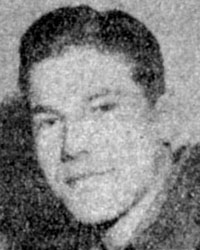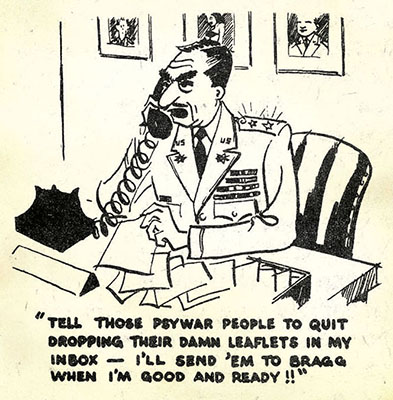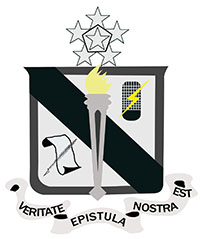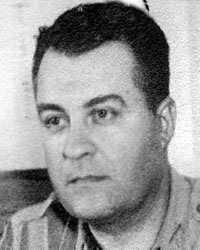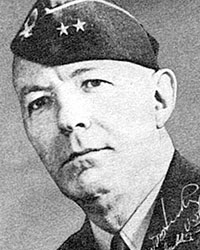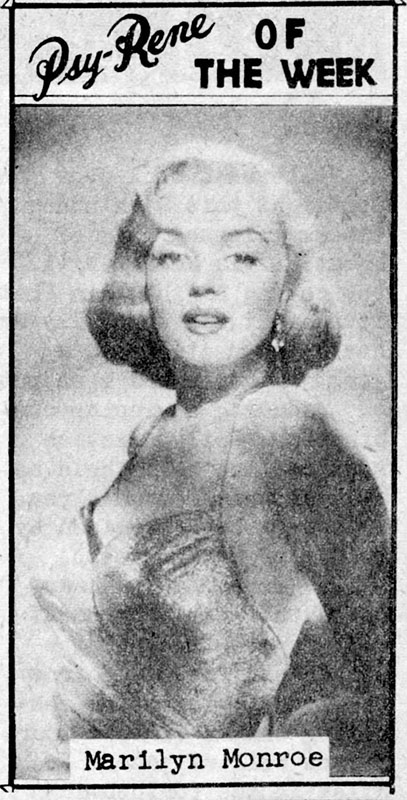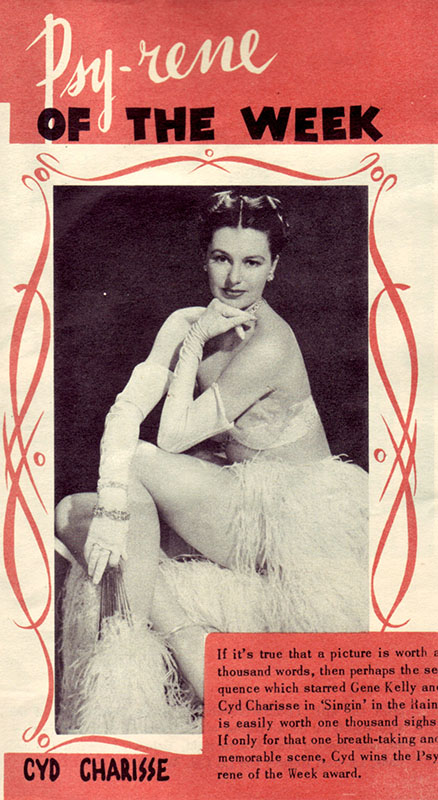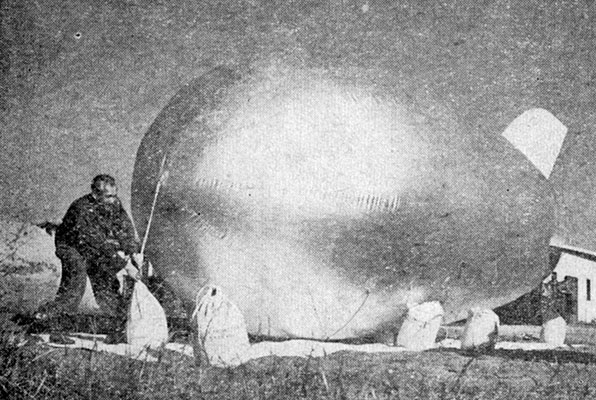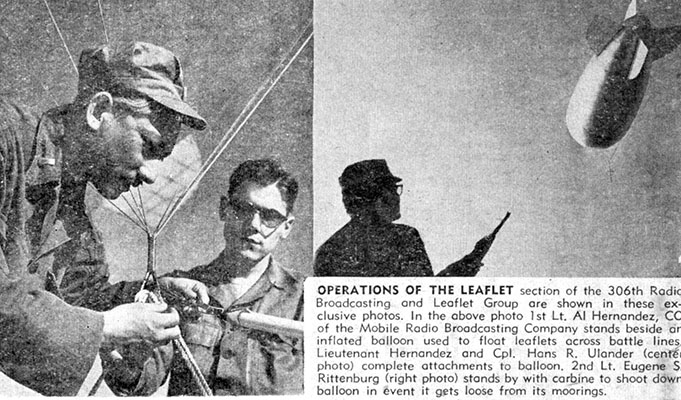DOWNLOAD
In late fall 1952, a blimp-shaped silver balloon mysteriously appeared 250 feet above the recently-established U.S. Army Psychological (Psywar) Warfare Center on Smoke Bomb Hill at Fort Bragg, North Carolina. The ghostly object hovered over the parade field that separated the Special Forces barracks from those of the Psywar units, where on most Friday afternoons, Colonel (COL) Charles H. Karlstad reviewed his command. Armed guards preventing access to a taped-off square cordon below the balloon explained that it was lifting an antenna to extend the range of the 8th Mobile Radio Broadcasting Company radio transmitters. Standing watch in the center was another with his M-1 Carbine at the ready to shoot down the antenna balloon if the cable broke. A typical comment by the curious was, “So that’s what you Psywar guys do.”1
Our knowledge about the units stationed on Smoke Bomb Hill, Fort Bragg, NC has been Special Forces-centric since the 1950s. Forgotten is that Special Forces began as an office in the Psywar Center in April 1952. COL Aaron Bank was working for Brigadier General (BG) Robert A. McClure, Chief of Psychological Warfare (CPW), when he left to become the Center Executive Officer and SF Office director for COL Karlstad.2
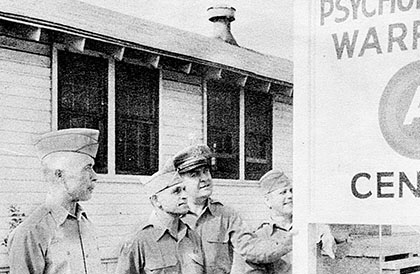
The Psychological Warfare Center was the umbrella organization for the Psywar School (proponent for Psywar and SF doctrine and training), a Psywar Board to test material, tactics, techniques, and procedures for Psywar and SF, the 6th Radio Broadcasting and Leaflet Group (RB&L) recently transferred from Fort Riley, KS, and the formation of Special Forces.3 When the 10th Special Forces Group (SFG) departed for Germany in October 1953, the 5th Loudspeaker & Leaflet (L&L) Company departed Fort Riley, KS for Europe.4

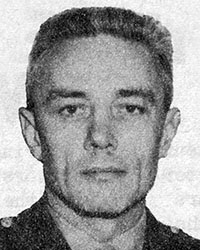
The purpose of this article is to show how The Psyn-post, first published on 16 January 1952 by the 5021st Psychological Warfare Detachment A.S.U. (Army Special Unit indicated provisional status) at Fort Riley, KS as The Weekly, provided a view of the 8th Mobile Radio Broadcasting Company (MRBC), a 6th RB&L unit.5 LTC Frank A. McCulloch, the detachment commander, explained the value of a weekly unit newsletter: “It is the medium whereby we can share bits of fact and humor. In time, it will be the mirror of missions and accomplishments, the weekly reflections of our daily lives and a continuing history of our service to our country.”6
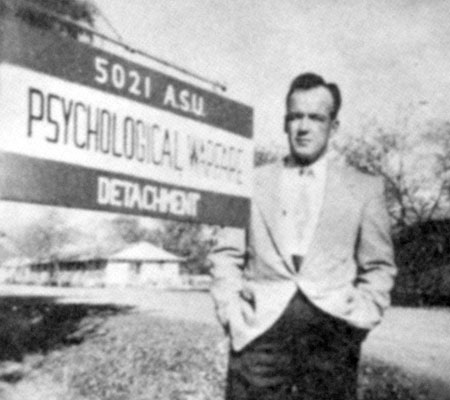
War revitalized the Army’s moribund Psywar capability. Shortly after the North Korean Peoples’ Army (NKPA) invaded the South in June 1950, the Tactical Information Detachment (TID) at Fort Riley, the only operational Psywar element in the Army, which supported the Aggressor Force of Army Field Forces, was alerted to deploy to Korea. The 30-man TID became the nucleus of the 1st Loudspeaker & Leaflet (L&L) Company and provided Eighth U.S. Army (EUSA) tactical Psywar support throughout the war. BG McClure succeeded in getting the 1st RB&L activated to conduct strategic Psywar for Far East Command (FECOM), the 301st RB&L [U.S. Army Reserve(USAR)] for Europe, and several more L&L companies (2nd, 5th & 9th) as well as the 5021st Psywar Detachment at Camp Forsyth, Fort Riley that became the basis for the 6th RB&L headquarters and its subordinate companies.7 While the official Psywar record reads well, it did not reflect reality.
Captain Robert A. Durk, a student in the Army General School’s second Staff Officers Course (January-March 1952), showed how broken Psywar was and the lack of attention given to it by the Pentagon eighteen months after war exploded in Korea. In his Psyn-post article, “The Fourth Fighting Arm,” CPT Durk stated, “In 1952, the Psywar Division of the Army General School at Fort Riley, KS was in its second year of operation. Organized at the end of 1950, the school had graduated one Psywar Staff Officers Course, a Psywar Officer class, and an NCO class by January 1952.”8 Few graduates of these 30-50 man courses went to Korea.9
What CPT Durk did not mention was that PFC George Vlandis was the PsyWar Division Instructor Committee chairman for the Enlisted Psywar Course, which required a college degree and a score of 110 or better on the G.E.D. (General Educational Development) tests.10 Ninety percent were college graduates, some with advanced degrees.11 Using faint praise attributed to General Dwight D. Eisenhower to show Psywar’s importance to the Army only emphasized how postwar leaders perceived its usefulness: “Without doubt, Psychological Warfare has proved its right to a place of dignity in our military arsenal.”12 One can better appreciate the uphill battle that BG Robert A. McClure, GEN Eisenhower’s European Chief of Psychological Warfare, fought to revitalize Psywar capabilities in the Army.
The 5021st Psywar Detachment, a collection point for Psywar personnel, had been “created in September 1951 by the flick of the 2nd L&L Company clerk’s fingers on a typewriter keyboard preparing another Morning Report” read a May 1952 Psyn-post.13 The Department of Army screened prior service records for Psywar experience and relevant skills and draftees for the “scientific professional” program. But, priorities for officer and enlisted schooling and the limited equipment went initially to units slated for overseas, the 1st and 301st RB&Ls.14
